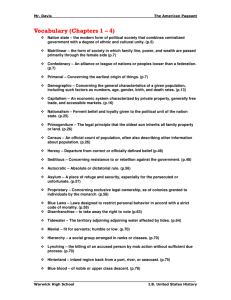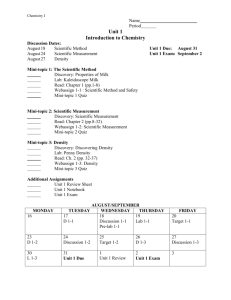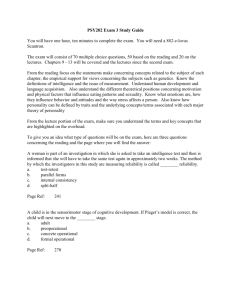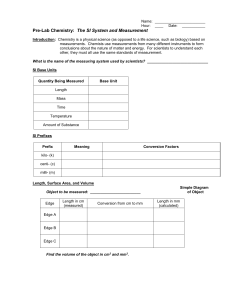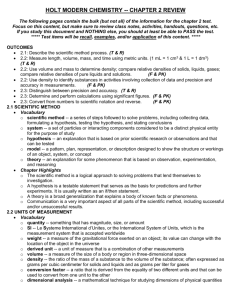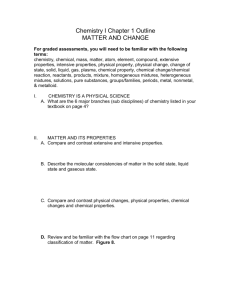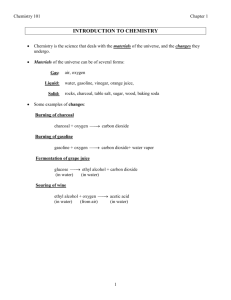Chemistry Chapter 2 Outline
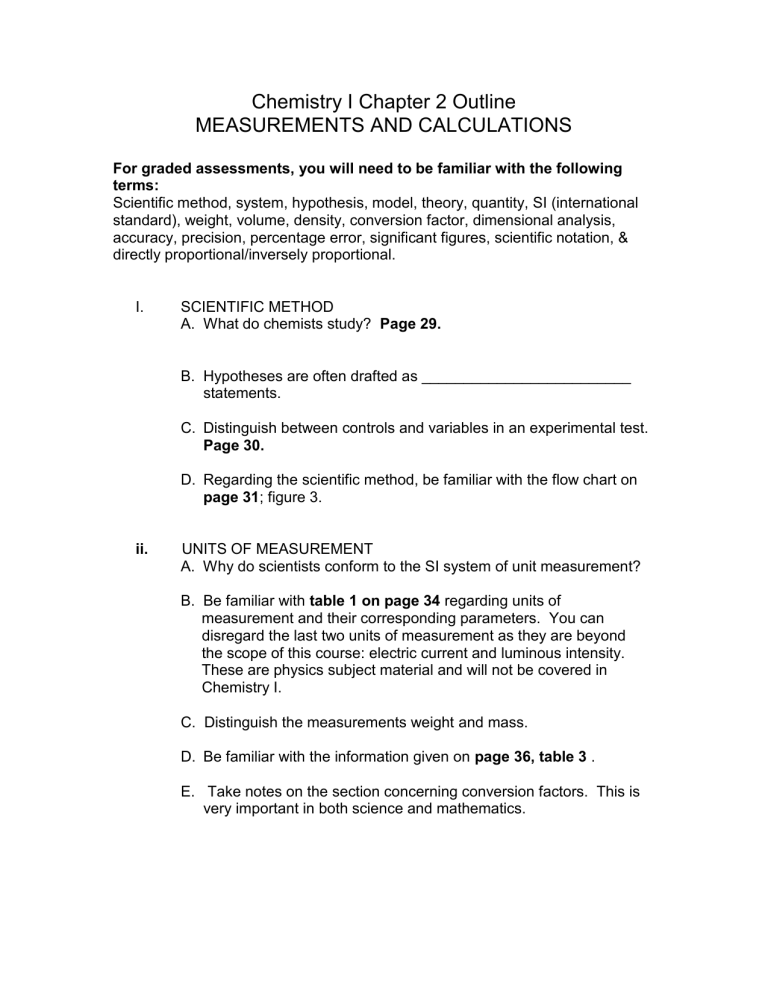
Chemistry I Chapter 2 Outline
MEASUREMENTS AND CALCULATIONS
For graded assessments, you will need to be familiar with the following terms:
Scientific method, system, hypothesis, model, theory, quantity, SI (international standard), weight, volume, density, conversion factor, dimensional analysis, accuracy, precision, percentage error, significant figures, scientific notation, & directly proportional/inversely proportional.
I. SCIENTIFIC METHOD
A. What do chemists study? Page 29.
B. Hypotheses are often drafted as _________________________ statements.
C. Distinguish between controls and variables in an experimental test.
Page 30.
D. Regarding the scientific method, be familiar with the flow chart on page 31 ; figure 3.
ii. UNITS OF MEASUREMENT
A. Why do scientists conform to the SI system of unit measurement?
B. Be familiar with table 1 on page 34 regarding units of
measurement and their corresponding parameters. You can
disregard the last two units of measurement as they are beyond
the scope of this course: electric current and luminous intensity.
These are physics subject material and will not be covered in
Chemistry I.
C. Distinguish the measurements weight and mass.
D. Be familiar with the information given on page 36, table 3 .
E. Take notes on the section concerning conversion factors. This is very important in both science and mathematics.
III. USING SCIENTIFIC MEASUREMENTS
A. Understand the difference between the two measurements used to verify the efficiency of a scientific experiment. Refer to page 44 and figure 8 to understand the difference between accuracy and precision.
B. The accuracy of an individual value or of an average experimental value can be compared quantitatively with the correct/accepted value by calculating a percentage error:
Percent error = experimental value – accepted value X 100%
accepted value
When a percent error is negative, is the experimental value greater than or less than the accepted value? When the percent error is positive, is the experimental value greater than or less than the accepted value?
C. In measurement and when considering significant digits, which digit is the most uncertain and why is it important to report this digit?
D. Be familiar with table 5 on page 47 concerning significant zeros.
These rules are important in the chemistry lab when taking measurements. Significant figures allow scientists to understand the degree of measurement for what is being examined.
E. Be familiar with table 6 on page 48 concerning rounding numbers with decimals.
F. Be familiar with all information on page 49 concerning rules for addition/subtraction and multiplication/division of significant figures.
G. Rigorously understand scientific notation. Look over pages 50 –
51.
H. In class, we will discuss and practice the difference between inverse and direct proportionality. Rigorously take notes. This is important in understanding scientific parameters.

